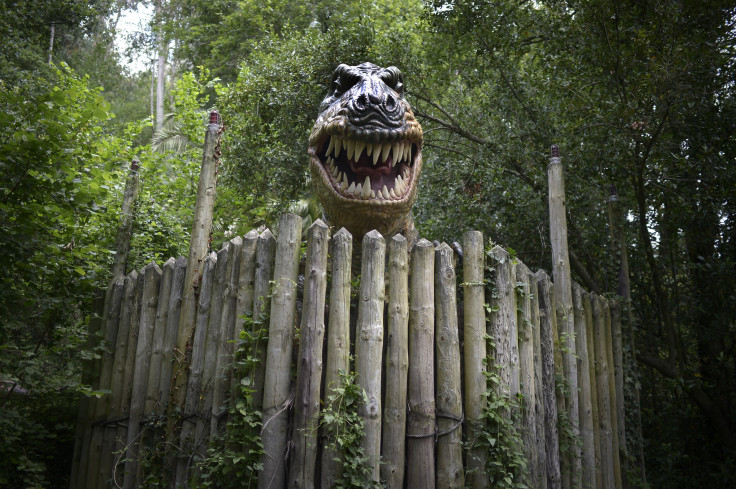T-Rex Dinosaurs, Other Theropods Had ‘Steak Knife-Like’ Teeth: Study

The unique tooth structure of the Tyrannosaurus rex (T-rex) and other theropod dinosaurs is partly responsible for the successful predating by these pre-historic animals, a new research by the University of Toronto Mississauga, Canada, showed. Researchers said that these dinosaurs had “steak knife-like” sharpness that made killing the prey simpler.
The findings determined how the specific tooth structure was exclusive to carnivorous theropods such as T-rex and Allosaurus, and even Coelophysis, one of the first theropods.
Study author Kirstin Brink and colleagues from the University of Toronto Mississauga examined fossilized tooth slices of eight carnivorous theropods including T-rex, Allosaurus, Coelophysis and Gorgosaurus. They looked into the chemical composition of the teeth of these pre-historic predators.
The study team found that these deep serrations made theropods proficient in chewing bones and slicing up flesh from larger animals and reptiles. This is one reason why these dinosaurs were top predators for nearly 165 million years, the researchers stated in the study published Tuesday in the Scientific Reports journal.
"What is startling and amazing about this work is that Kirstin was able to take teeth with these steak knife-like serrations and find a way to make cuts to obtain sections along the cutting edge of these teeth. If you don't cut them right, you don't get the information. This brought about a developmental explanation for the tooth formation; the serrations are even more spectacular and permanent," Professor Robert Reisz, from the university's department of biology, said in a statement Tuesday.
Researchers also analyzed teeth, which were not yet broken through the gums, along with a mature dinosaur teeth sample and found that theropod teeth were not a result of chewing on hard materials.
"What is so fascinating to me is that all animal teeth are made from the same building blocks, but the way the blocks fit together to form the structure of the tooth greatly affects how that animal processes food,” Brink said in the statement. “The hidden complexity of the tooth structure in theropods suggests that they were more efficient at handling prey than previously thought, likely contributing to their success."
Researchers noted that the only animal living today with the same superficial tooth structure is the Komodo dragon in Indonesia.
© Copyright IBTimes 2024. All rights reserved.






















